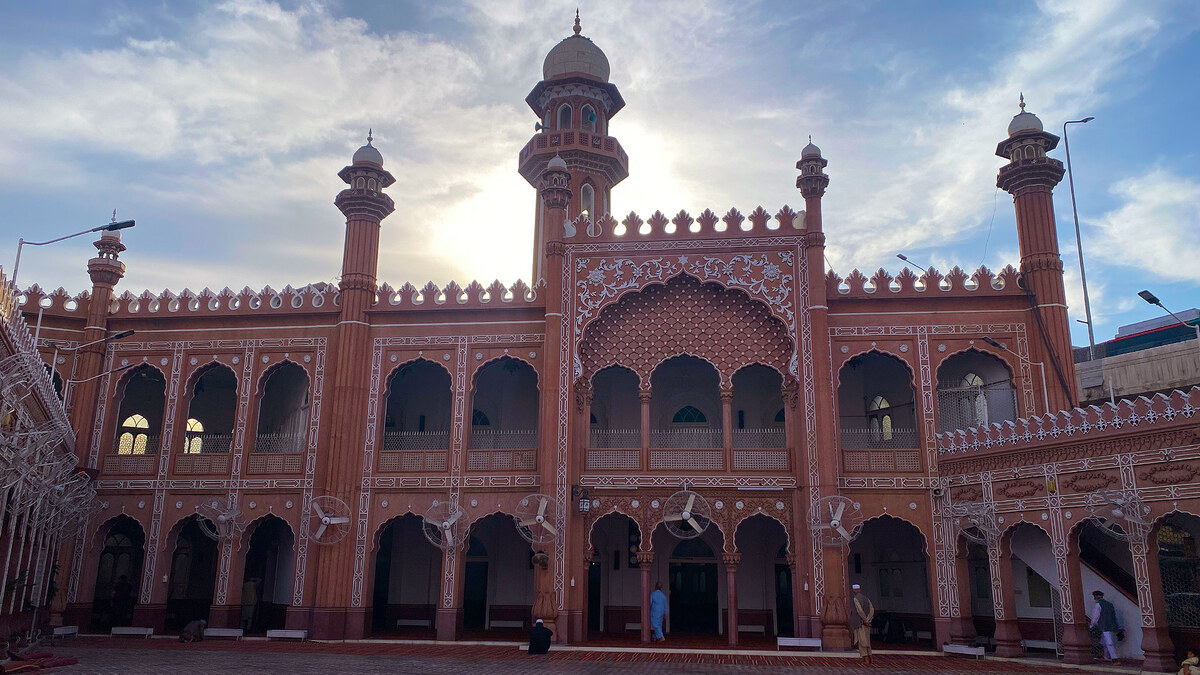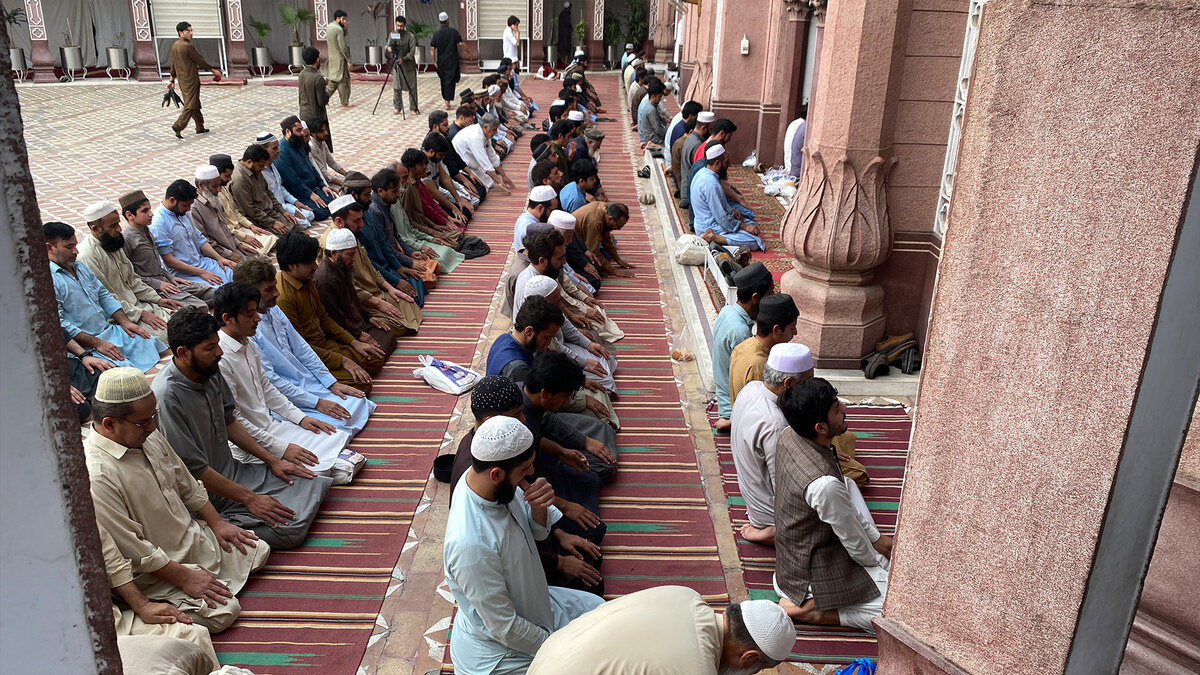ISLAMABAD: As Pakistanis near the finishing line with the end of Ramadan on Tuesday, several had their eyes on the prize the next day – the much-awaited Eid feast with family and friends.
If Ramadan teaches us about patience and gratitude for the simpler things in life, Eid-al-Fitr’s festivities and specially-cooked dishes act as a bonus after a month of abstinence and reflection.
We spoke to a selection of Pakistanis on what foods they usually serve on the occasion and came away with the most popular ones here:
Seviyan/Sheer Khurma
Be it for breakfast, lunch, dinner, or as a quick dessert when unexpected guests drop in, Seviyan is a cult classic on Eid. Served hot or cold, it takes on a more decadent form when it’s added to thick milk and topped with chopped dry fruits. This twist to the classic, which is also known as Sheer Khurma, is the most popular way of serving Seviyan on Eid. Add a generous dollop or two of ghee and you are immediately transported to vermicelli heaven with a drier version of the dessert.
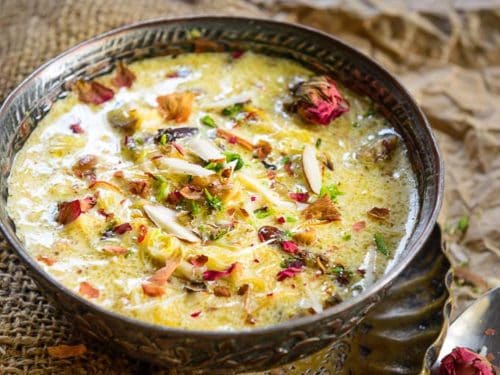
Sheer Khurma (Photo Curtesy: Whisk Affair)
Sindhi Busri
A traditional sweet bread which traces it’s roots to Sindh, Busri is a flakey, crispy, and softer version of the paratha, with just the right amount of sweetness to it. Made using whole wheat flour, jaggery and either butter or ghee, it’s a permanent fixture on most Sindhi tables during Eid.
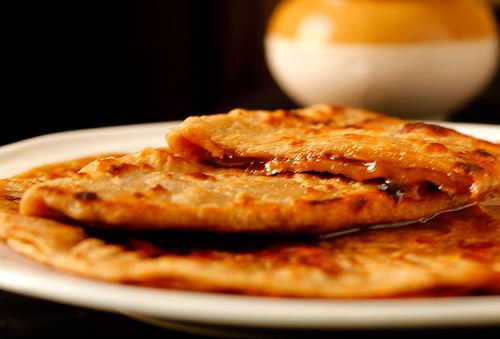
Sindhi Bursi (Photo Courtesy: desiappetite.com)
Dahi Bhallas
Little pillows of culinary greatness that are essentially deep-fried balls of lentils soaked overnight, Dahi Bhallas are first fried and then thrown into a pool of sweet and tangy yogurt. When they finally emerge to catch a breath, they are crowned with a generous dose of chutneys and chopped onions. An unsung hero of the trolley cart at many a tea gatherings on Eid, the Dahi Bhalla plays the role of both an appetizer and as a soother for taste buds that have been subjected to an infinite number of spicy dishes.
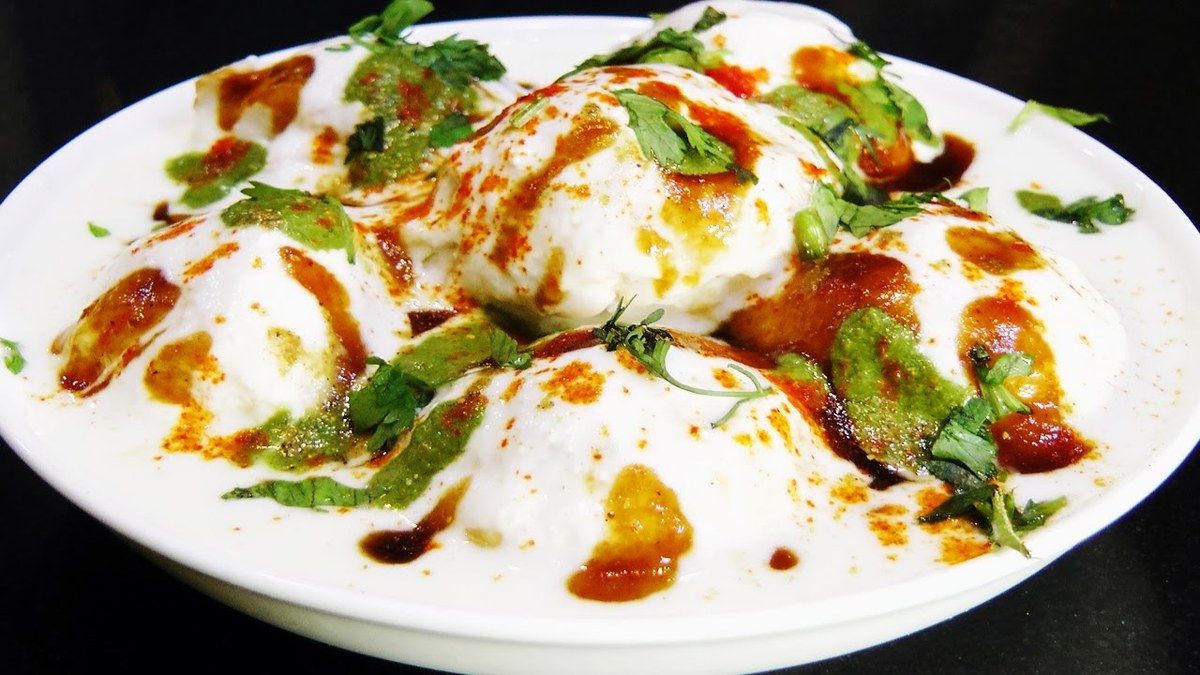
Dahi Balla (Photo Courtesy: Youtube)
Channa chaat
If Seviyan and Sheer Khurma had a true rival to fight for the top spot at the Eid buffet tables, it would have to be Channa Chaat. Served hot and crisp or cold and creamy from the fridge, most families have their own take on what can only be described as Pakistan’s version of the chickpea salad. Usually combined with a mix of chopped onions, potatoes, parsley, or cilantro and topped with tamarind sauce and green chutney, this versatile dish is (usually) a lightweight crowd pleaser when compared to the heavier food items on the table.
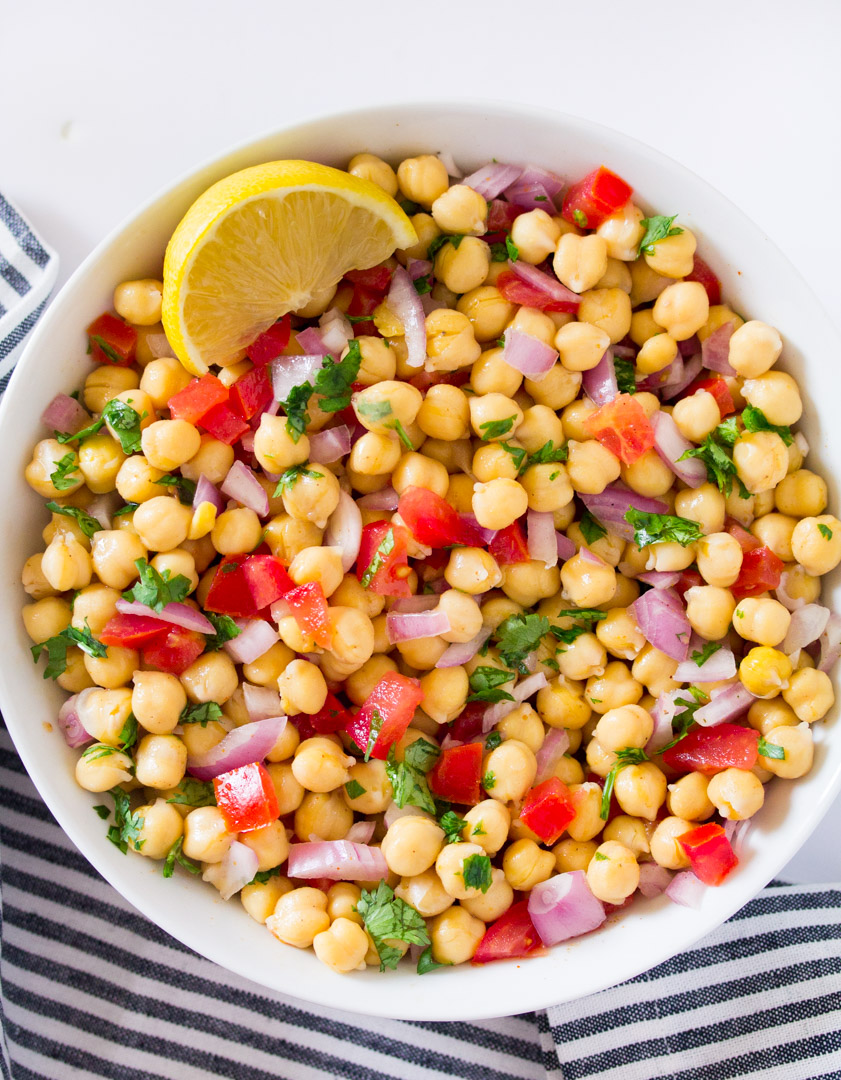
Channa Chaat (Photo Courtesy: I knead to Eat)
Gulab Jamuns
Speaking of heavier dishes, the top spot in the mithai box for friends or family is usually occupied by the king of all sweets – the gulab jamun. Some families up the ante by serving the rich and famous dessert straight out of a pot of sugar syrup. It’s there way to kick start the sweetest part of Eid – with dollops of deep-fried goodness soaked in a saccharine, rose-flavoured syrup.
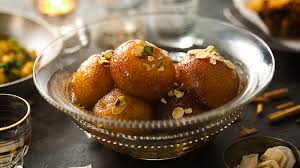
Gulab Jammun (Photo Courtesy: BBC)
Kashmiri Harissa
Kashmiri families bring out the delicious Harissa on Eid, a mutton-based dish that is slow cooked for hours and hours, the end result of which is a melt-in-the-mouth, fragrant, mouth-watering meat porridge. It’s soul food for most food connosseuirs and is best eaten with Kashmiri bread, Kander Czout.
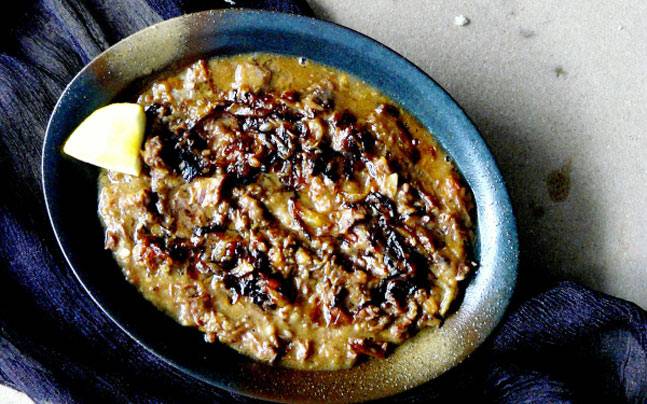
Kashmiri Harissa (Photo Courtesy: India Today)
Mutton Pulao
Where this is meat, there will be rice. Biryani has its day in the sun, but Eid is where pulao really comes to shine. Mutton Pulao, in particular, takes on the protagonist’s role on the day. A lighter version of the biryani, the pulao is an all-time favorite and a staple on most dinner tables for the occasion.
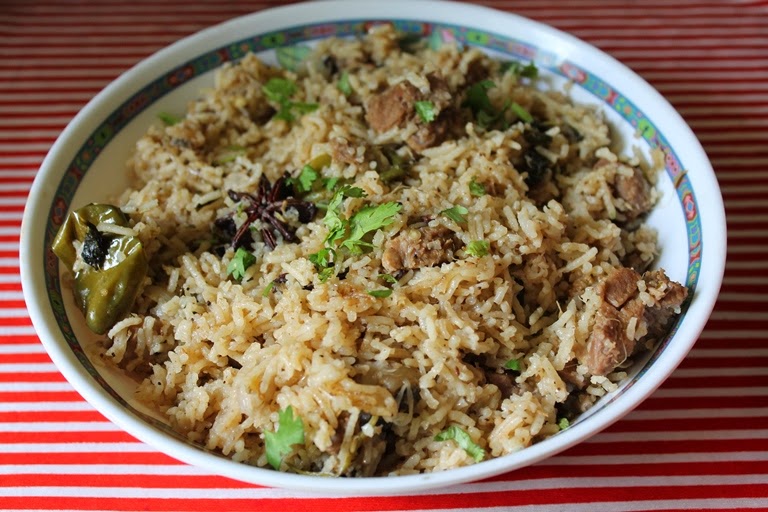
Mutton Pulao (Photo Courtesy: Yummy Tummy)
Peshawari Chapli Kabab
Don’t get us wrong – we love our chicken tikkas and seekh kabas, but if there was a clear winner on the meat front for Eid-al-Fitr, it would have to be the Peshawari Chapli Kabab. A spicier version of the burger, these kababs are flattened and panfried to perfection. They can be paired with bread or rice or eaten on their own with a salad for sides.
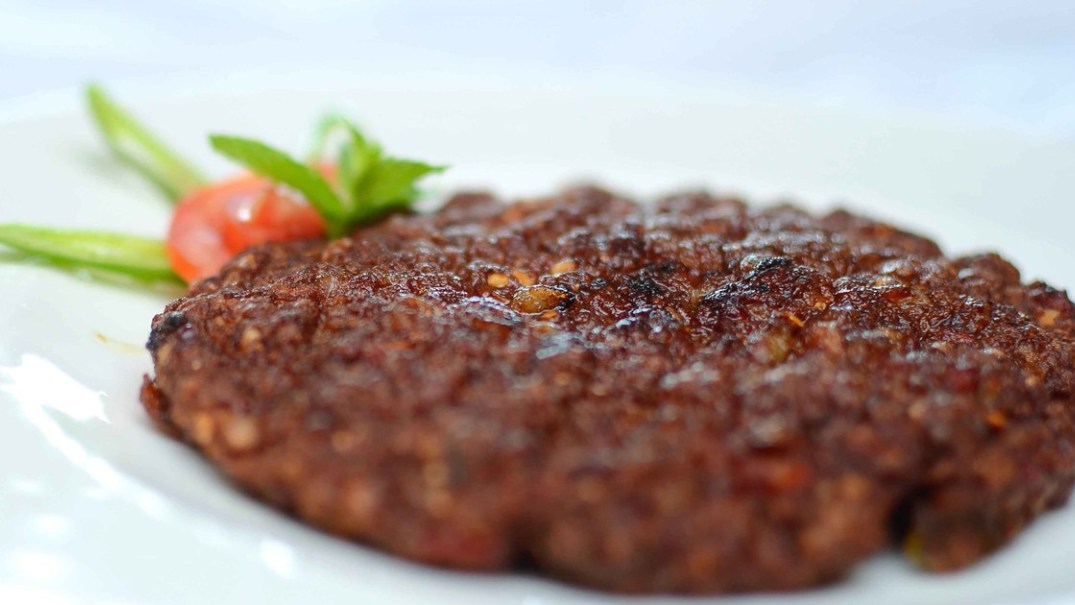
Peshawari Chappal Kabab Meat (Photo Courtesy: Forever Hungry)








